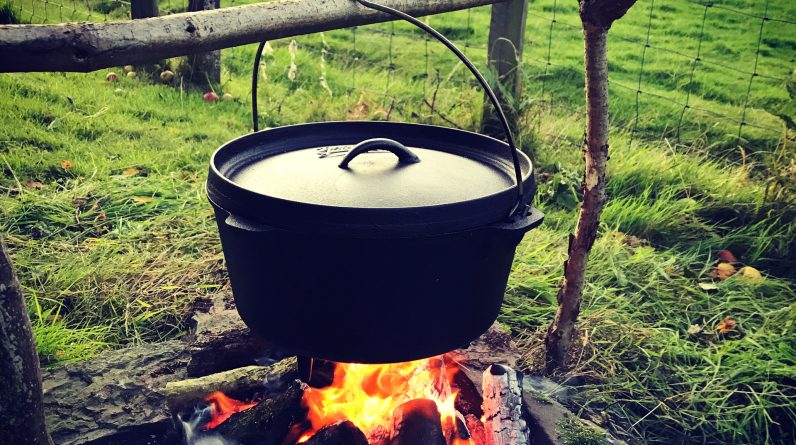
If you’re an outdoor enthusiast who loves camping and cooking over a campfire, then you’ll be excited to learn about the latest trend in camping gear: eco-friendly campfire cooking equipment. With increasing concerns about environmental sustainability, many campers are now looking for products that not only provide delicious meals but also minimize their impact on nature. From biodegradable cookware to eco-conscious fuel sources, this article will explore the world of eco-friendly campfire cooking equipment, providing you with the knowledge and options you need to make your next camping trip both tasty and environmentally friendly. Yes, absolutely! There are several eco-friendly campfire cooking equipment options available that can help minimize your environmental impact while enjoying delicious meals in the great outdoors. From biodegradable plates and utensils to solar-powered stoves, there are plenty of choices to suit your needs and preferences. In this comprehensive article, we will explore different types of eco-friendly campfire cooking equipment and provide insights into their benefits, features, and popular brands. So, let’s dive in and discover the eco-friendly options available for your next camping adventure.
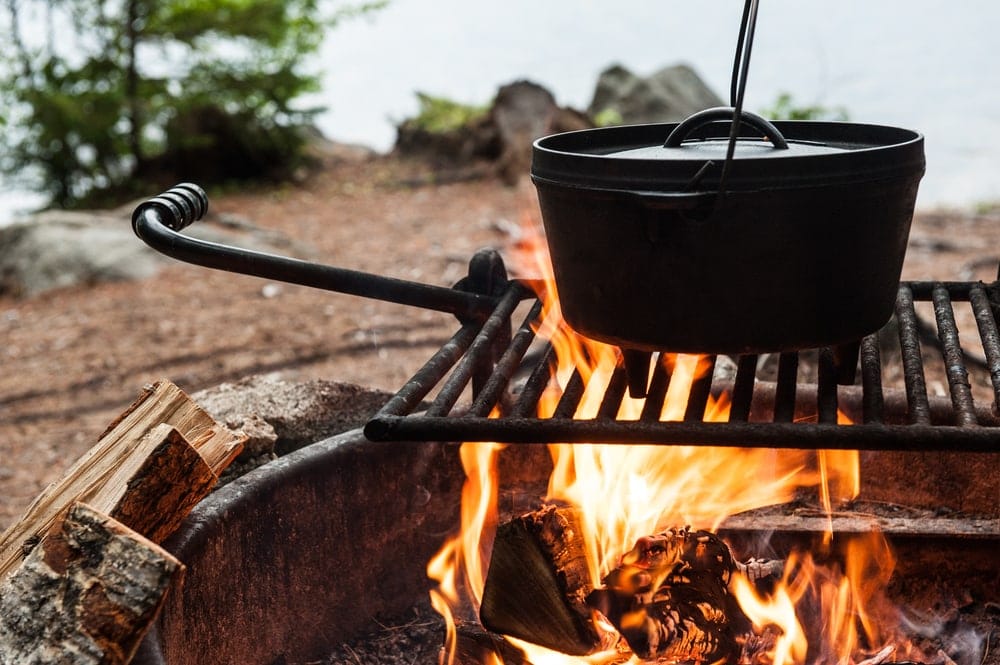
This image is property of outforia.com.
Biodegradable Plates and Utensils
Benefits of Biodegradable Plates and Utensils
Using biodegradable plates and utensils is a fantastic way to reduce waste in your campsite. One of the major benefits of these eco-friendly alternatives is that they break down naturally over time, reducing the burden on landfills and minimizing pollution. Biodegradable plates and utensils are generally made from materials such as cornstarch, bamboo, or palm leaves, which are renewable and sustainable. By opting for biodegradable tableware, you can enjoy a convenient and guilt-free cooking experience knowing that you are contributing to a greener planet.
Types of Biodegradable Materials
There are several types of biodegradable materials used in the production of plates and utensils. One popular option is cornstarch, which is derived from corn and breaks down naturally. It is a versatile and lightweight material that can withstand moderate heat and is suitable for various types of food. Another eco-friendly material is bamboo, which is a sustainable and renewable resource. Bamboo tableware is not only biodegradable but also durable and lightweight, making it perfect for camping. Palm leaves are also commonly used to create biodegradable plates and utensils. These plates are made from fallen palm leaves, preventing any harm to the environment. Each material offers its own unique benefits, so choose the one that aligns with your needs and values.
Brands Offering Biodegradable Plates and Utensils
When it comes to choosing biodegradable plates and utensils, there are several trusted brands in the market. One popular brand is Bambu, known for its high-quality bamboo products. Bambu offers a wide range of biodegradable plates, bowls, and utensils that are sturdy, sustainable, and compostable. Another reputable brand is VerTerra, which specializes in palm leaf tableware. VerTerra’s plates and utensils are not only eco-friendly but also microwave-safe and oven-safe, providing convenience and versatility. Eco-gecko is another brand that offers biodegradable tableware made from palm leaf, giving you an elegant and sustainable option for your camping trips. These brands prioritize sustainability without compromising on functionality and aesthetics, making them excellent choices for eco-conscious campers.
Reusable Cookware and Cutlery
Advantages of Reusable Cookware and Cutlery
If you’re looking for a more long-term and sustainable solution for your campfire cooking, reusable cookware and cutlery are the way to go. By investing in high-quality reusable items, you can significantly reduce single-use waste and minimize your environmental footprint. Reusable cookware and cutlery are designed to withstand repeated use and are often made from durable materials such as stainless steel or cast iron. Not only do they minimize waste, but they also offer a more enjoyable cooking experience with their reliability and thermal conductivity.
Durable and Sustainable Materials
When choosing reusable cookware and cutlery, opt for materials that are both durable and sustainable. Stainless steel is a popular choice due to its strength, corrosion resistance, and longevity. It can withstand high temperatures, making it suitable for various camping cooking methods. Cast iron is another excellent option known for its exceptional heat retention and even distribution. It is perfect for slow cooking and can be used directly over the campfire. Both stainless steel and cast iron are recyclable, making them eco-friendly choices for your campfire culinary adventures.
Popular Brands for Reusable Cookware and Cutlery
There are several reputable brands that offer high-quality reusable cookware and cutlery for outdoor enthusiasts. GSI Outdoors is a well-known brand that specializes in durable and innovative camping cookware. They offer a wide range of products, including compact and nesting cookware sets that are easy to transport and clean. Another popular brand is Stanley, renowned for its iconic thermos bottles. Stanley also manufactures durable stainless steel cookware and utensils that are perfect for outdoor cooking. Snow Peak is a brand that focuses on minimalist design and functionality. They offer lightweight and durable cookware that ensures a seamless cooking experience. By opting for these reputable brands, you can enjoy the convenience and sustainability of reusable cookware and cutlery during your camping trips.
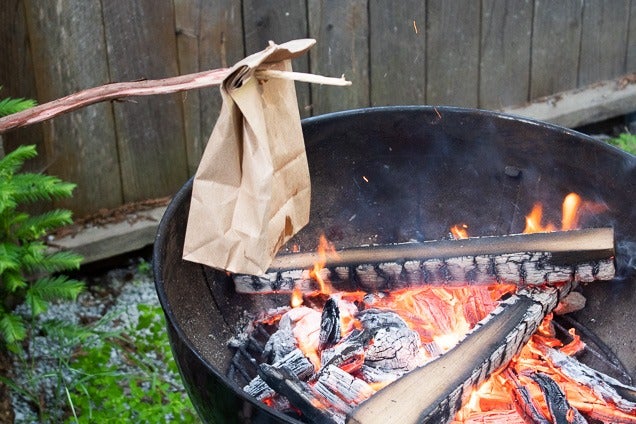
This image is property of cdn.thewirecutter.com.
Solar-Powered Stoves
How Do Solar-Powered Stoves Work?
Solar-powered stoves utilize the energy from the sun to generate heat for cooking. These innovative devices typically consist of reflective panels or mirrors that concentrate sunlight onto a cooking surface, converting solar energy into usable heat. The concentrated sunlight heats up the cooking vessel, allowing you to prepare meals without the need for traditional fuels such as wood or gas. Solar-powered stoves are a clean and renewable energy solution for campfire cooking, making them an eco-friendly option for outdoor enthusiasts.
Benefits of Solar-Powered Stoves
Solar-powered stoves offer several benefits for campfire cooking. Firstly, they eliminate the need for fossil fuels or wood, reducing carbon emissions and air pollution. By harnessing the power of the sun, these stoves provide a sustainable and renewable cooking solution. Additionally, solar-powered stoves are lightweight and portable, making them ideal for camping trips. They are easy to set up and require minimal maintenance, allowing you to focus on enjoying your outdoor adventures. Another significant advantage is that solar-powered stoves operate silently, creating a peaceful and serene cooking environment in nature.
Features to Consider When Buying a Solar-Powered Stove
When choosing a solar-powered stove, there are a few key features to consider. Look for stoves that have efficient and durable reflectors or mirrors to maximize heat concentration. Adjustable reflectors are beneficial as they allow you to position the stove to capture the optimum amount of sunlight. Portability is also an essential factor, so consider the weight and size of the stove to ensure it fits your camping needs. Some solar-powered stoves come with built-in battery backup systems, allowing you to store energy for cooking during cloudy days. Finally, it’s worth exploring additional features such as temperature control or a cooking timer for added convenience. By considering these features, you can select a solar-powered stove that suits your specific requirements for eco-friendly campfire cooking.
Wood-Burning Stoves
Advantages of Wood-Burning Stoves
Wood-burning stoves have long been a traditional and eco-friendly method of campfire cooking. These stoves utilize wood as fuel, which is a renewable and readily available resource. By burning wood, you can enjoy the authentic campfire cooking experience while minimizing your carbon footprint. Wood-burning stoves also provide a versatile cooking option, allowing you to grill, boil, or simmer your meals with ease. Additionally, wood-burning stoves create a warm and inviting ambiance, enhancing the overall camping experience.
Different Types of Wood-Burning Stoves
There are various types of wood-burning stoves available, each offering unique features and benefits. One popular option is a rocket stove, which is designed for efficient and clean burning. Rocket stoves use a combustion chamber and an insulated chimney to ensure complete combustion, resulting in reduced smoke and increased fuel efficiency. Another type is a hobo stove, a simple and lightweight option commonly made from aluminum or stainless steel. Hobo stoves are easy to use and are suitable for small cooking tasks. If you’re looking for a more versatile option, consider a collapsible wood-burning stove. These stoves can be folded down for easy transportation and are compatible with different pot and pan sizes. With various types of wood-burning stoves available, you can find the perfect one to suit your campfire cooking needs.
Factors to Consider Before Purchasing a Wood-Burning Stove
Before purchasing a wood-burning stove, there are a few factors you should consider. First and foremost, check the regulations and guidelines in your camping area regarding open fires and wood-burning stoves. Some areas may have restrictions or bans due to fire hazards or environmental concerns. Additionally, take into account the size of the stove and its cooking capacity. If you plan to cook meals for a large group, opt for a stove with a larger cooking surface and sufficient airflow for efficient combustion. Fuel availability is another crucial factor, as different locations may have different restrictions on gathering firewood. Ensure you have access to a sustainable wood source or consider carrying your own firewood. By considering these factors, you can make an informed decision and select a wood-burning stove that aligns with your camping needs and environmental goals.
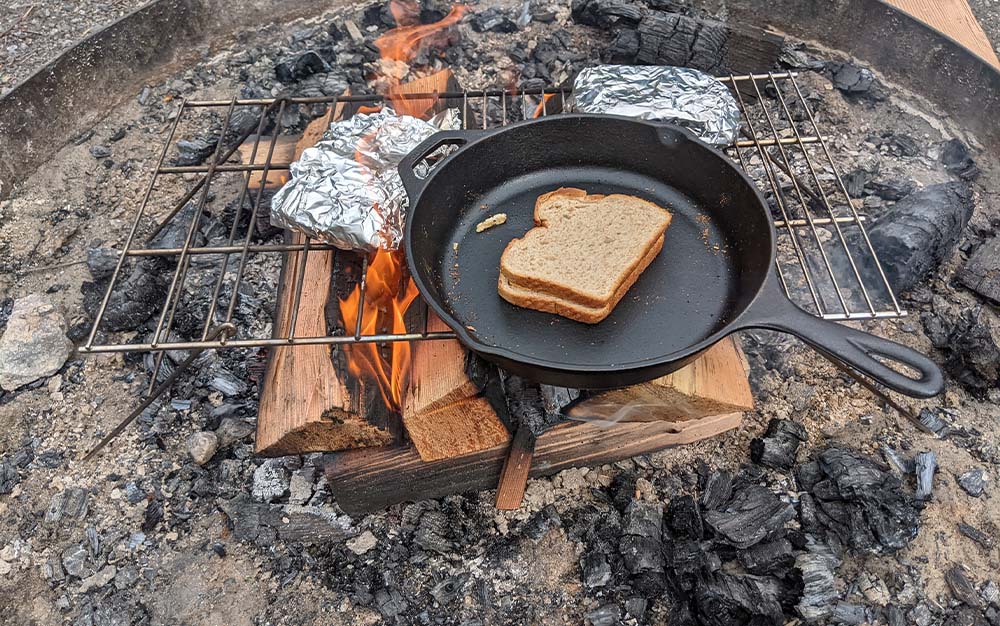
This image is property of www.outdoorlife.com.
Charcoal-Free Grill Options
Benefits of Charcoal-Free Grills
Charcoal grills have long been a popular choice for outdoor cooking, but they can have negative impacts on the environment due to the emissions they produce. Thankfully, there are alternatives available that offer the same grilling experience without the need for charcoal. Charcoal-free grills, such as electric grills, propane grills, and pellet grills, provide eco-friendly options for campfire cooking. These grills produce fewer emissions and are more energy-efficient, making them environmentally conscious choices for outdoor enthusiasts.
Electric Grills
Electric grills are a convenient and environmentally friendly option for campfire cooking. They operate using electricity as a power source, eliminating the need for charcoal or wood. Electric grills produce minimal smoke and emissions, reducing the impact on air quality. They are also easy to use and require minimal setup. Simply plug in the grill, let it heat up, and start cooking. Electric grills come in a variety of sizes, from compact tabletop models to larger freestanding units, allowing you to choose one that suits your camping needs.
Propane Grills
Propane grills are another charcoal-free option that provides clean and efficient grilling. These grills use propane gas as fuel, which burns cleaner than charcoal and produces fewer harmful emissions. Propane grills offer precise temperature control and quick heating, allowing you to cook your meals with ease. They are also portable and lightweight, making them popular choices for camping trips. Propane grills come in different sizes and designs, ranging from small tabletop grills to larger freestanding models. Consider the size and cooking capacity you require to ensure you select the right propane grill for your camping adventures.
Pellet Grills
Pellet grills are a versatile and eco-friendly option that combines the convenience of modern technology with the smoky flavor of traditional charcoal grilling. Pellet grills use small wooden pellets made from compressed sawdust as fuel. These pellets are often produced using wood waste from lumber mills, making them a sustainable choice. The pellets are automatically fed into a hopper, where they are ignited by an electric element, producing smoke and heat for cooking. Pellet grills offer precise temperature control and allow for grilling, smoking, roasting, or baking your favorite meals. They are a fantastic option for those who appreciate the flavor of charcoal grilling but want a more eco-friendly alternative.
Portable and Compact Campfire Cooking Equipment
Solutions for Minimalistic and Lightweight Equipment
If you prefer a minimalist and lightweight approach to campfire cooking, there are several portable and compact options available. These equipment choices allow you to enjoy delicious meals without the bulk and weight of traditional campfire cooking gear, making them perfect for hikers, backpackers, and those looking for a more mobile camping experience.
Compact Stoves
Compact stoves are designed for ease of transport and efficiency. These stoves are typically small in size, foldable, and lightweight, making them ideal for backpacking or solo camping trips. Compact stoves often use canister fuel, such as butane or propane, and offer adjustable heat settings for precise cooking. They provide a reliable heat source without taking up much space in your camping gear. Some compact stoves also come with integrated windshields to protect the flame from wind, ensuring efficient cooking even in challenging outdoor conditions.
Collapsible Cookware
Collapsible cookware is a practical solution for those who want to minimize the space occupied by their camping gear. This type of cookware is designed to collapse or nest together, allowing for easy storage and transportation. Collapsible pots, pans, and bowls can be compressed into a compact form when not in use, saving valuable space in your backpack. Despite their collapsible design, these cookware pieces are often made from durable materials such as silicone or stainless steel, ensuring their functionality and longevity. Collapsible cookware is lightweight, easy to clean, and perfect for campers who value convenience and efficiency.
Foldable Utensils
Foldable utensils provide a space-saving alternative to traditional camping cutlery. These utensils are designed to fold or collapse, making them compact and easy to store. Folding utensils often feature a locking mechanism to ensure stability when in use and easy folding for storage. They are typically made from stainless steel or other durable materials, ensuring their longevity and reliability. Foldable utensils are lightweight, easy to clean, and a practical choice for campers who prioritize functionality and efficiency.

This image is property of gobackpacking.com.
Eco-Friendly Fire Starters
Benefits of Eco-Friendly Fire Starters
Starting a campfire is an essential part of campfire cooking, but it’s important to do so in an eco-friendly manner. Using eco-friendly fire starters offers several benefits in terms of environmental impact and convenience. Eco-friendly fire starters are typically made from natural and sustainable materials, reducing the reliance on chemical-based fire starters that can release harmful toxins into the environment. These fire starters are often biodegradable, ensuring they break down naturally and do not contribute to landfill waste. Additionally, eco-friendly fire starters are designed to be highly efficient and reliable, offering a hassle-free way to ignite your campfire and start cooking.
Natural Fire Starter Materials
There are several natural materials that serve as excellent fire starters for your campfire cooking. One popular option is dried birch bark, which ignites quickly and produces a high flame due to its natural oils. Twigs and small branches from hardwood trees such as oak or hickory can also serve as effective fire starters. Pinecones, especially those from pine or spruce trees, make great natural fire starters due to their resin content. Cotton balls soaked in vegetable oil or beeswax are another eco-friendly fire starter option that is easy to store, carry, and ignite. By using these natural fire starter materials, you can ensure an eco-friendly and efficient start to your campfire cooking.
DIY Fire Starters
If you enjoy getting crafty and want to customize your fire starters, there are plenty of DIY options available. One simple DIY fire starter idea is to collect dryer lint and pack it into small empty cardboard egg cartons. Pour melted wax, such as old candle wax, over the lint-filled cartons and let it solidify. Cut the cartons into individual sections, and you have homemade fire starters that are easy to ignite and provide a sustained flame for your campfire. Another DIY option is to make fire starters using rolled newspaper or paper towel tubes filled with sawdust or shredded paper and wax. These DIY fire starters are economical, environmentally friendly, and a fun project to enhance your campfire cooking experience.
Eco-Cooking Techniques
Leave No Trace Camping
When engaging in campfire cooking, it’s essential to practice Leave No Trace principles to minimize your impact on the environment. Leave No Trace is a set of guidelines that promote responsible outdoor behavior and aims to protect the natural environment. When it comes to campfire cooking, this means using established fire rings or fire pits whenever possible and avoiding building new fire pits. Use fallen branches or firewood instead of cutting live trees and never burn trash or non-organic materials in your campfire. Be mindful of the fire’s size and only create a fire that is necessary for cooking your meals. By practicing Leave No Trace camping, you can ensure the preservation and enjoyment of natural spaces for generations to come.
Campfire Cooking Safety
Safety should always be a top priority when engaging in campfire cooking. Ensure you have an appropriate fire extinguisher or water source nearby in case of emergencies. Never leave your campfire unattended, and always completely extinguish it before leaving or going to sleep. Use designated fire rings or pits whenever possible to contain your fire and prevent the spread of flames. Be cautious of any fire bans or restrictions in your camping area and adhere to local regulations. It’s also important to use proper cooking utensils and gloves to prevent burns or injuries. By prioritizing safety, you can enjoy a worry-free and enjoyable campfire cooking experience.
Efficient Fuel Management
Efficient fuel management is crucial for eco-friendly campfire cooking. When using wood as fuel, strive to use dead or fallen wood instead of live trees. Deadwood burns more efficiently and reduces the impact on living trees. Ensure you gather an appropriate amount of firewood to avoid wasting wood or leaving excess fuel behind. Use smaller branches and twigs for starting the fire, gradually adding larger pieces as the fire builds. This method conserves fuel and ensures a sustained and efficient fire for cooking. It’s also beneficial to use grills or cooking systems that optimize heat distribution and retention, allowing you to cook your meals with less fuel consumption. By practicing efficient fuel management, you can minimize waste and maximize the use of your campfire cooking fuel.
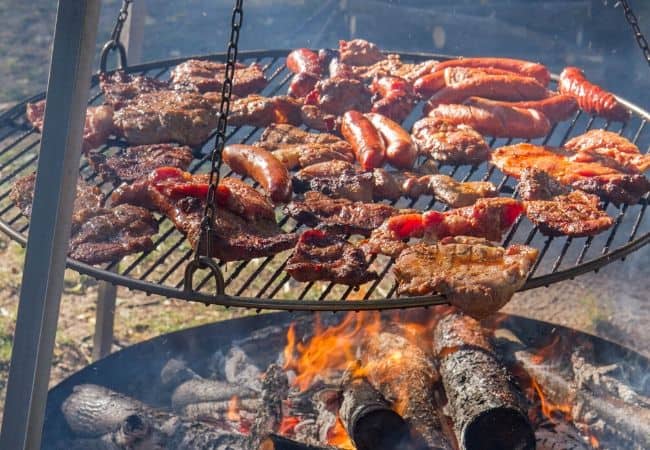
This image is property of embracingthewind.com.
Choosing the Right Eco-Friendly Campfire Cooking Equipment
Considerations for Selecting Equipment
When selecting eco-friendly campfire cooking equipment, consider your specific camping needs and preferences. Think about the size of your camping party and the types of meals you will be preparing. Choose equipment that is suitable for your cooking style and culinary preferences. If you value versatility, opt for cookware or grills that can accommodate different cooking methods, such as grilling, boiling, or baking. Portability is another essential factor, especially if you plan on backpacking or hiking to your campsite. Look for equipment that is lightweight, collapsible, or easy to carry. Lastly, prioritize sustainable materials and brands that align with your environmental values. By considering these factors, you can select the right eco-friendly campfire cooking equipment that meets all your requirements.
Budget-Friendly Options
Eco-friendly campfire cooking equipment doesn’t have to break the bank. There are plenty of budget-friendly options available that are both eco-conscious and affordable. When it comes to biodegradable plates and utensils, consider purchasing in bulk to save money and minimize packaging waste. Many outdoor stores offer discounted prices for larger quantities of eco-friendly tableware. For reusable cookware and cutlery, look for sales or promotions from reputable brands. Often, you can find high-quality stainless steel cookware at reasonable prices. When it comes to solar-powered stoves or wood-burning stoves, compare prices and features across different brands to find the best value for your money. By exploring budget-friendly options, you can enjoy eco-friendly campfire cooking without compromising your financial stability.
Reviews and Recommendations
To ensure you select the best eco-friendly campfire cooking equipment, it’s always helpful to read reviews and recommendations from other outdoor enthusiasts. Online platforms and camping forums are excellent resources for finding reliable reviews and firsthand experiences with different products. Look for detailed feedback regarding durability, functionality, and overall satisfaction with the equipment. Pay attention to the experiences of campers with similar needs and cooking styles as yours. Recommendations from trusted sources, such as camping experts or reputable outdoor organizations, can also guide you in making informed decisions. By leveraging the wisdom and experiences of others, you can confidently choose the right eco-friendly campfire cooking equipment for your outdoor adventures.
In conclusion, there are numerous eco-friendly campfire cooking equipment options available to enhance your outdoor cooking experience while minimizing your environmental impact. Whether you opt for biodegradable plates and utensils, reusable cookware and cutlery, solar-powered stoves, wood-burning stoves, or charcoal-free grills, you can make a positive difference for the planet without compromising on quality or convenience. Consider the various features, benefits, and brands available for each type of equipment, and choose the options that align with your camping needs and values. By practicing eco-friendly fire starters, responsible camping techniques, and efficient fuel management, you can further enhance your eco-conscious campfire cooking experience. So, gather your gear, plan your meals, and set off on an adventure knowing that you are making a positive contribution to the environment with your choice of eco-friendly campfire cooking equipment.

